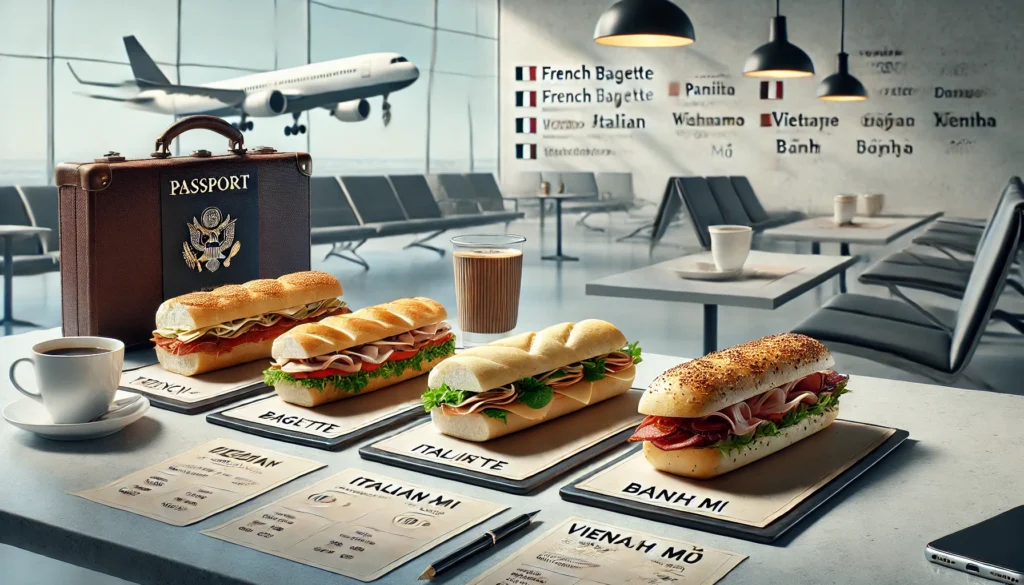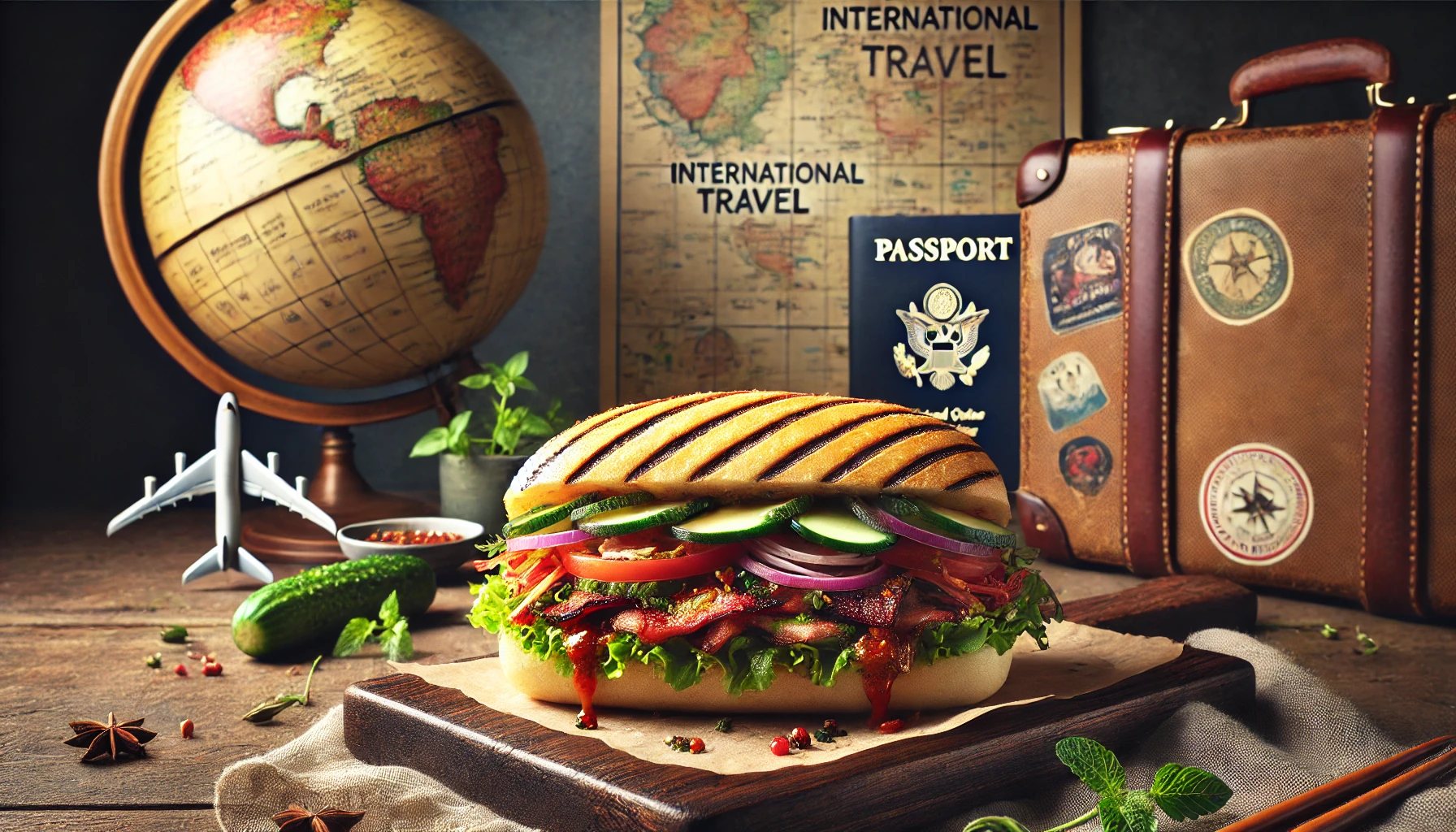While navigating through unfamiliar territory as a business traveler, the toughest part of my journey has been to keep a healthy and balanced diet. I have learned that sandwiches, with their flexibility and easiness in carrying around, are a great solution for a busy professional who is always on the go through my world-traveling adventures. This article will showcase my own travel experiences and knowledge on sandwiches which are inspired by different parts of the world and are our sources of nutrients that keep our working days productive, but are also our passports to the global cuisine world journey.
The Global Sandwich Revolution
My travels have shown me that a sandwich, in one form or another, one can find in almost any culture. Not only are these trafficables useful, but they are also an opening into different countries’ dining traditions. In addition to traditional recipes from different parts of the world, we can use fresh ingredients from all over the world to create delicious sandwiches in only a few minutes.
European Inspirations
Italian Panini
One of my most delicious finds was the Italian panini. I recall a time when I was sitting in a small-home style café in Florence, crunching down on a crispy sandwich filled with prosciutto, mozzarella, and sun-dried tomatoes. Nowadays, I construct the sandwich in my hotel room or at home using a portable sandwich press. The first thing is to use high-quality products and then press the sandwich until the cheese melts and the crust is crispy brown.
French Croque Monsieur
The French Croque Monsieur is another European specialty I had to adapt for my travels. This one is a grilled cheese and ham sandwich that is traditionally topped with the béchamel sauce, and if you are simplifying for on-the-go eating, you can take the time to simplify only certain parts. I ask for good quality ham and top my sandwich with Gruyère cheese, Dijon mustard, and crispy bread. The béchamel is not always the case, but the taste is still reminiscent of a walk down Paris streets.
Asian-Inspired Sandwiches
Vietnamese Banh Mi
The Banh Mi is a fantastic food gift from both French and Vietnamese cooking as I found it during my time in Vietnam. This type of sandwich usually comes with a hard crust and is stuffed with pickled vegetables, cilantro, chilli and a protein ingredient like pork, chicken, or a vegetarian option. For a road trip version, I pack the ingredients in separate wrappers and put together the sandwich just before enjoying it so that the bread remains nice and crispy.
Japanese Katsu Sando
The Japanese Katsu Sando is a remarkable discovery for its simplicity and unique taste. One slice of white bread is the base for the breaded and fried cutlet (normally a pig or chicken cutlet) and the other one is topped with a tangy tonkatsu sauce. When it’s time for me to go, I use precooked chicken or pork cutlets and assemble the sandwich with a bit of store-bought tonkatsu sauce. It is a taste of Tokyo in every corner of the world.
Middle Eastern Delights

Sabich
ADuring a business trip to Tel Aviv, I stumbled upon Sabich, a sandwich of Iraqi and Israeli origin that has been a must on my travel diet. This usually includes fried eggplant, hard-boiled eggs, hummus, tahini, and a vegetable salad in pita bread. When on the go, I use the eggplant that is briefly grilled rather than fried and I pack the ingredients separately to be put together later on.
North American Twists
Montreal Smoked Meat Sandwich
One of my quick-stop encounters is the Montreal Smoked Meat Sandwich from Canada. With its own blend of spices, it is a kind of pastrami, and it is topped usually with rye bread and mustard serving as sides. When I travel, I type the name of the food into the search bar of maps and I go to places where good quality deli meat and grainy mustard are sold to experience Montreal no matter where I am.
South American Flavors
Uruguayan Chivito
The Chivito is a stick-to-the-ribs type of sandwich that I first tried in Montevideo and it’s just right when I am busy. It traditionally contains thinly sliced churrasco beef, mozzarella, tomatoes, mayonnaise, and at times bacon and eggs. My skillful travel approach uses pre-cooked beef slices and eliminates egg for its handling convenience while still providing the desired effect.
Practical Tips for the Traveling Sandwich Enthusiast
Through the years, I have come up with some tips that have helped me considerably in creating these world-traveling master sandwiches. The next few tips are meant to guide you to maximizing the healthy alternative given to sandwiches you have been traditionally having your everyday meals:
- Get Airtight Containers of the best quality possible to keep the ingredients fresh and prevent mixing of different items.
- Take along a compact cutting board and a good-quality, portable knife that is permitted by the airlines (need to check regulations before the trip).
- Track down the local markets or local delis for local ingredients and try authentic cooking at those places.
- Learn a few simple food phrases in the local language which might help with grocery shopping or ordering food.
- Blend different food elements to create your own fusion sandwiches. But of course, adding what you think could enhance the taste of the dish to mixing of around three to four cuisines on a sandwich can still be justified. Such creativity may be found in your local or the best-frequented sandwiches of different eateries and could be showcased in a culinary rhythm, which expands both your taste and experience.
Conclusion
Apart from both supporting mobile working and being one of the most feasible means of having a world-tour:) these international sandwiches are the better part of foods that pilfer away life momentarily to link places I traveled to and to add a bit of that world begin section winter sports, cruises, golf breaks, diving holidays, surfing weekends away, backpacking trips, trekking adventures and anything related to water, explorers, and discovery. With a view towards creative thinking and a taste of the new, we can make the good old sandwich a gourmet food that is not only edgy but which brings adventure to our bodies and our minds.
Frequently Asked Questions
1. How can I keep my sandwiches fresh when traveling long distances?
As of my own experience, those taking a long trip that is not from the bread to the streets of the tiniest village that you take might find it useful to prepare and store the ingredients in airtight containers and to finalize the sandwich just before the meal. The bread in plastic bags works well to conserve its freshness. If you pre-make a sandwich, cover it first with parchment paper, then aluminum foil. Also, put a small ice pack in your bag to keep the food fresh and cool.
2. Are there any international sandwich ingredients that are particularly easy to find when traveling?
Actually, the conditions do not change much when looking for the necessary things, so, it is still an easy job to do. Bread is a common find in almost all parts of the world, although the meal may be of different types. For instance, various types of cheese, such as cheddar and mozzarella, are widespread and can be found at most locations. Ham and chicken are usually easy to spot in the meat section. The fruits and vegetables, such as tomatoes, lettuce, and cucumbers, are present in almost all parts of the world. Also, the condiments like mustard and mayonnaise are normally found. However, if you are looking to get more of some specific or traditional ingredients, my suggestion is to find local markets or little stores where this stuff can be purchased nearby.
3. How can I recreate international sandwich flavors if I can’t find authentic ingredients?
It is indeed a real problem that I often face, but I got around it by systematically mimicking the international sandwiches even without properly authentic ingredients. The major point is to grasp the taste features of the sandwich and seek substitutes that are close to the original ones. For instance, if it is insurmountable to procure the prosciutto for an Italian sandwich a thinly sliced ham can be used. Again, with cheese, if a particular type is out of your reach, you can go for one that has quite close texture and acidity and sifty a little bit to taste if necessary. Relatively simple substances as sauces and spreads can be closely duplicated by using more usual substitutes. There is naturally plenty of room for experimentation, so feel free to add, decrease or change the composition of the dish according to your preference. In general, what we should be focused on is to have food that will communicate the sandwich’s characteristic and not necessarily be exactly the same as the traditional one.
